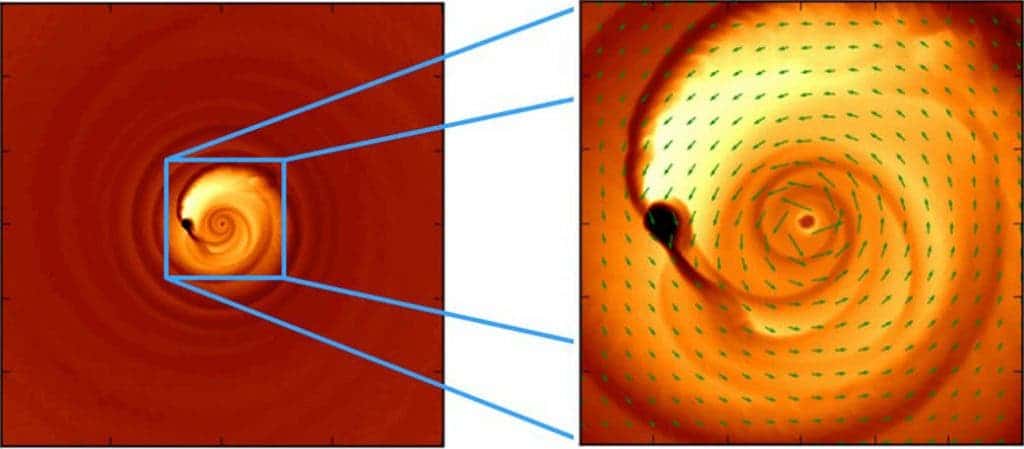That’s what I call fatal attraction: two supermassive black holes are “dancing”, drawn together by each other’s humongous gravitational attraction, set for a collision that will likely send ripples through the very fabric of space-time.

As you probably know by now, black holes are anything but empty – rather quite the opposite. Black holes are the most packed matter we know of, with so much mass that even light can’t escape them. Supermassive black holes are, as the name suggests, very massive black hole. How massive? Well, as beautifully portrayed here, they can be millions or billions of times more massive than the Sun – while being smaller than Pluto; it’s thought that most galaxies have supermassive black holes at their center. Astrophysicists have often asked themselves what would happen if two black holes were to collide (or merge), and they might finally get their answer thanks to a bleeping light.
The pair of black holes is located 3.5 billion light-years away, deep in the Virgo constellation, separated by a mere light-week. The previous closest black hole pair found was 20 light years away in comparison.
“This is the closest we’ve come to observing two black holes on their way to a massive collision,” said the study’s senior author, Zoltan Haiman, an astronomer at Columbia. “Watching this process reach its culmination can tell us whether black holes and galaxies grow at the same rate, and ultimately test a fundamental property of space-time: its ability to carry vibrations called gravitational waves, produced in the last, most violent, stage of the merger.”
The light isn’t coming from the pair itself, but rather from the turbulence around them. What we didn’t know, however, is why the light appears to be flashing: brightly shining, dimming, and repeating again and again. As these black holes orbit around each other, they are thought to send out a varying light signal. The signal was detected by astronomers using telescopes on the ground and in space. Now, Daniel D’Orazio, Zoltan Haiman, and David Schiminovich at Columbia University built a simulation of the pair and have now come up with a valid and intriguing explanation. They found that the orbit of the black holes is responsible for the intermittent signal. They are orbiting around each other, like a pair of spinning dancers.
Interestingly, it’s not the bigger, but the smaller black hole that’s bleeping the strongest. This happens because the smaller one is less able to throw around interstellar dust, which means that more gas ends up drifting close to it – and it’s this gas that gives off the bright glow.
The blackholes will collide in about 100,000 years, but until then, researchers will be getting valuable information which the gravitational waves predicted, but not yet detected, by Einstein’s general theory of relativity, grows.
“We can start to put numbers on the rates that black holes come together and build up into larger black holes, and use what we’re learning to search for more black holes pairs,” said study coauthor David Schiminovich, an astronomer at Columbia.
That would be indeed a monumental achievement – and colliding black holes could just do it.
“The detection of gravitational waves lets us probe the secrets of gravity and test Einstein’s theory in the most extreme environment in our universe–black holes,” said the study’s lead author, Daniel D’Orazio, a graduate student at Columbia. “Getting there is a holy grail of our field.”
Journal Reference: Daniel J. D’Orazio, Zoltán Haiman & David Schiminovich. Relativistic boost as the cause of periodicity in a massive black-hole binary candidate. Nature 525, 351–353 (17 September 2015) doi:10.1038/nature15262


